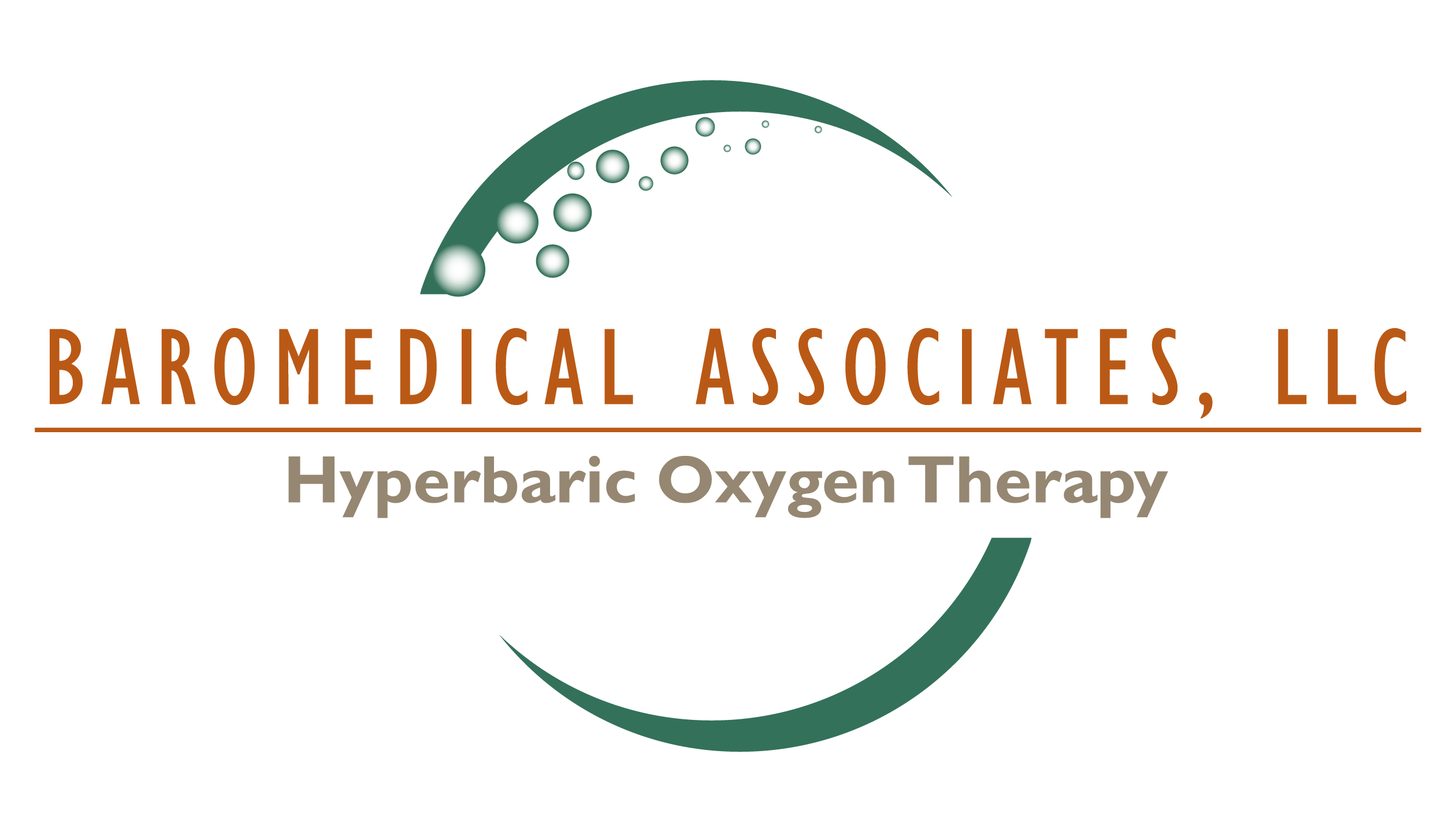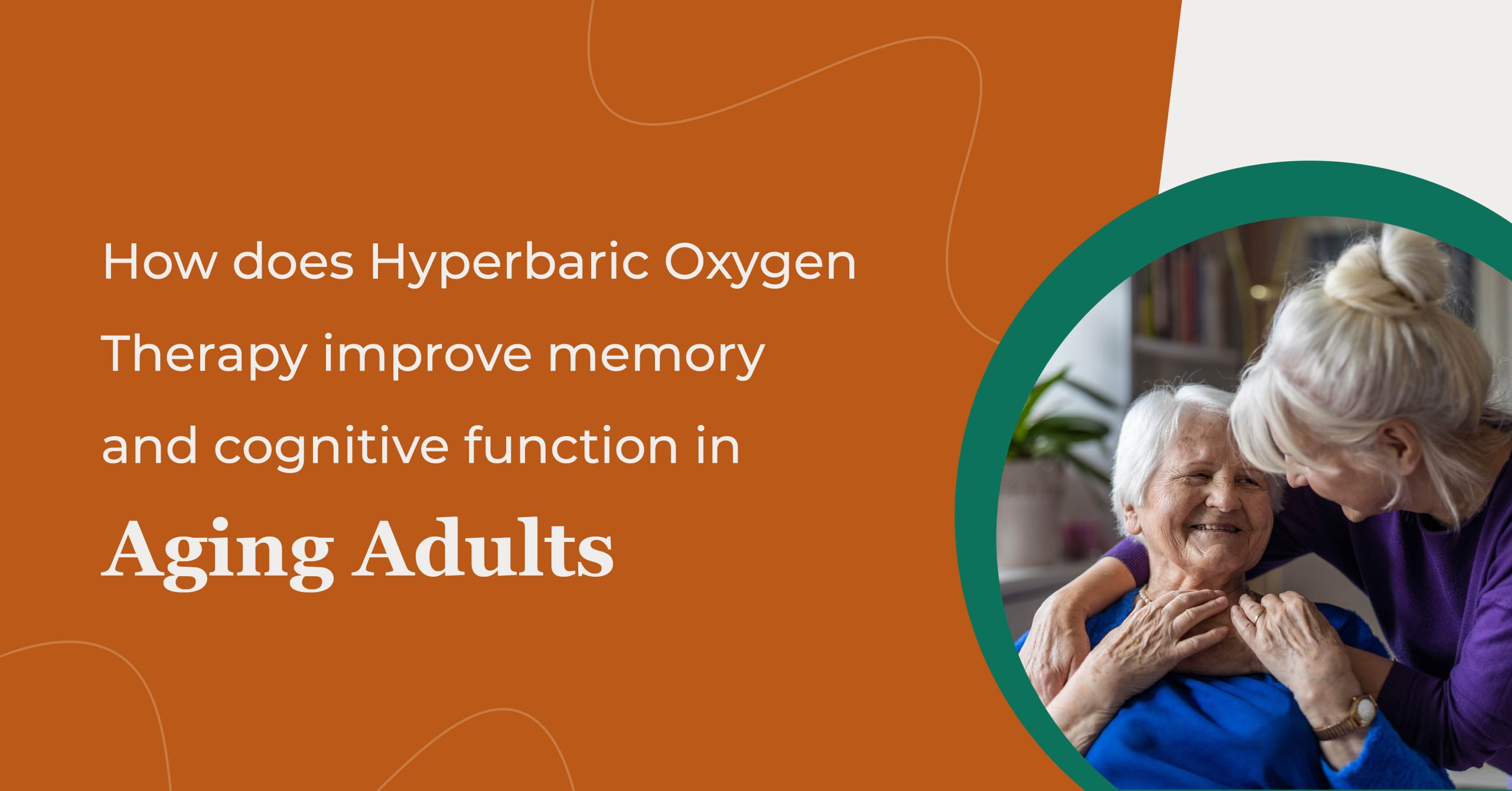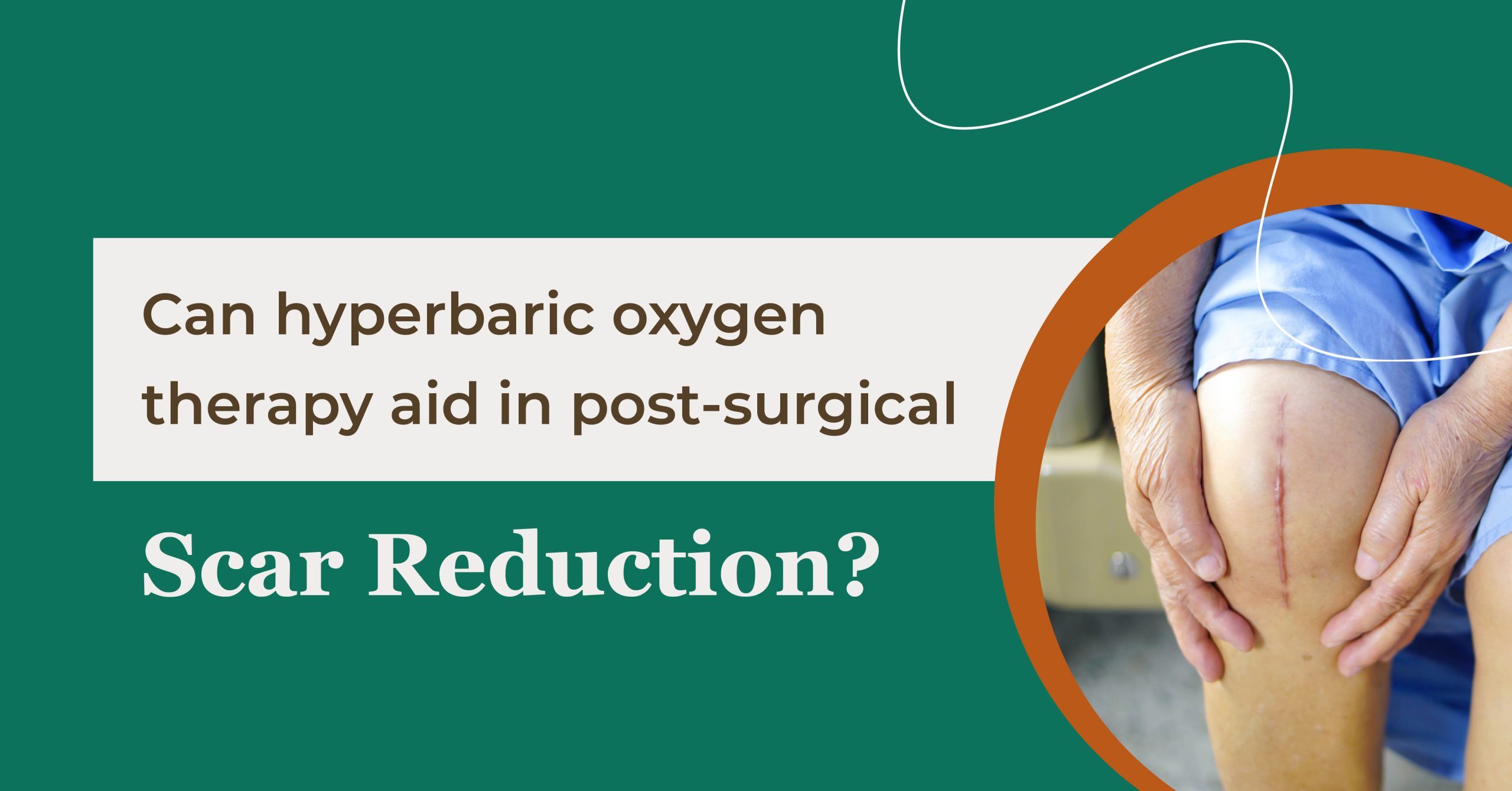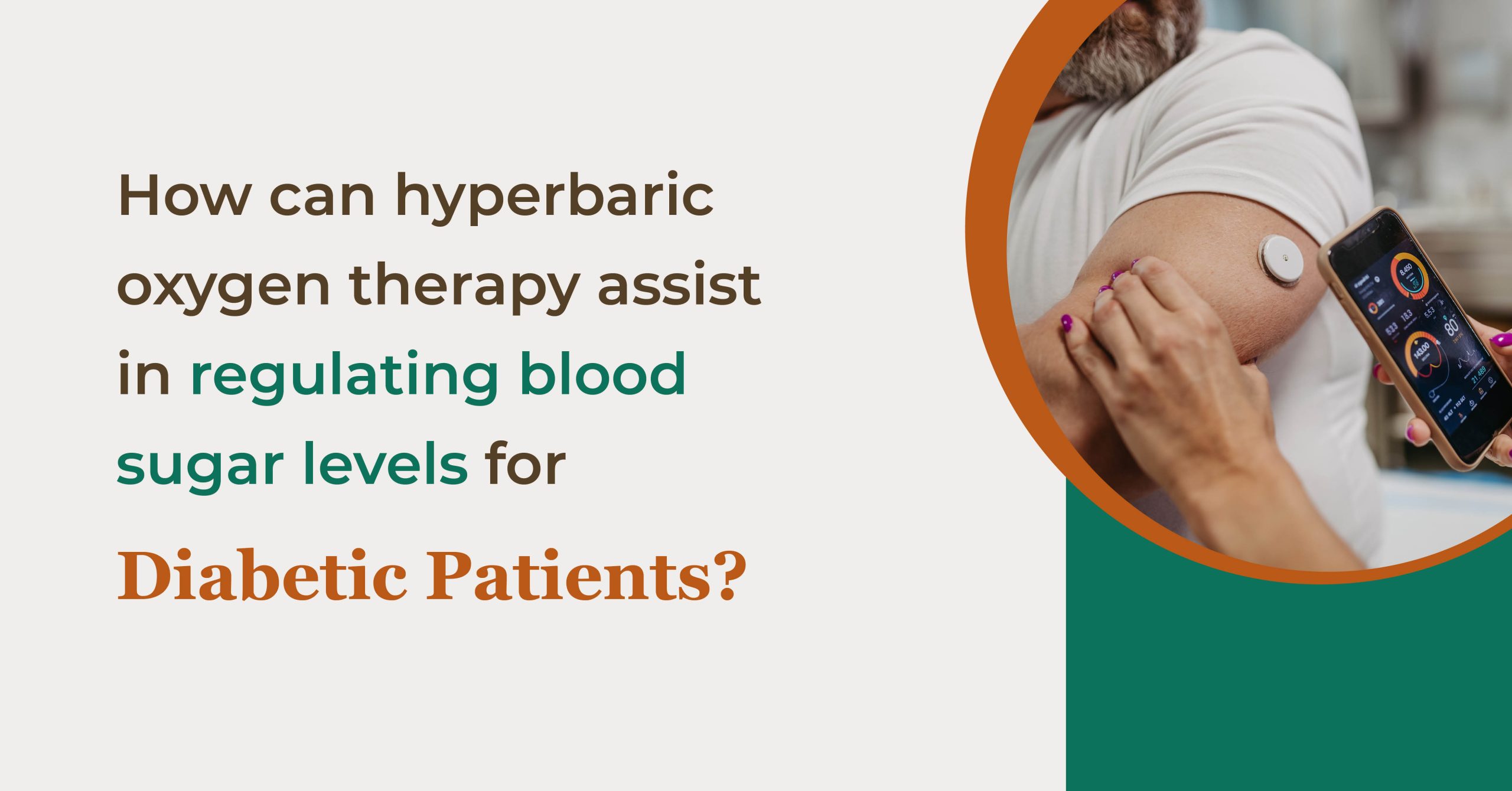Beginnings of Hyperbaric Oxygen Therapy
The clinical evidence for hyperbaric oxygen therapy goes back more than 300 years. In 1662, a British physician named Nathaniel Henshaw created a chamber called a domicilium, believing that increased air pressure would be beneficial for patients suffering from acute conditions. He didn’t have scientific evidence to back this up, and oxygen was not discovered until 1775, but he was on to something, and his work started us down a path we’re still traveling today.
By the late 1800s, hyperbaric chambers were being used to treat a variety of health problems. In the early 1900s, Dr. Orville Cunningham, a Kansas City professor of anesthesia noticed, as he was treating patients of the Spanish influenza epidemic, that those who lived at higher elevation had a higher mortality rate than those who lived near or at sea level. Reasoning that barometric pressure must have something to do with this, Dr. Cunningham developed his own hyperbaric chamber and became a leading proponent of hyperbaric therapy. In the 1940s, the United States military began using HBOT to treat decompression sickness in deep sea divers, a practice still in use today. It was not until the 1950s, however, that the use of hyperbaric oxygen therapy became widespread. In 1956 a paper was published at the University of Amsterdam by Dutch surgeon Ite Boroema, detailing the use of hyperbaric oxygen to extend safe operating times during cardiac surgery. Boroema later reported on the benefits of using HBOT to treat ischemic leg ulcers and necrotizing infections. Today, using HBOT to treat chronic wounds is common, and research on hyperbaric oxygen therapy continues to uncover more applications for this innovative treatment.
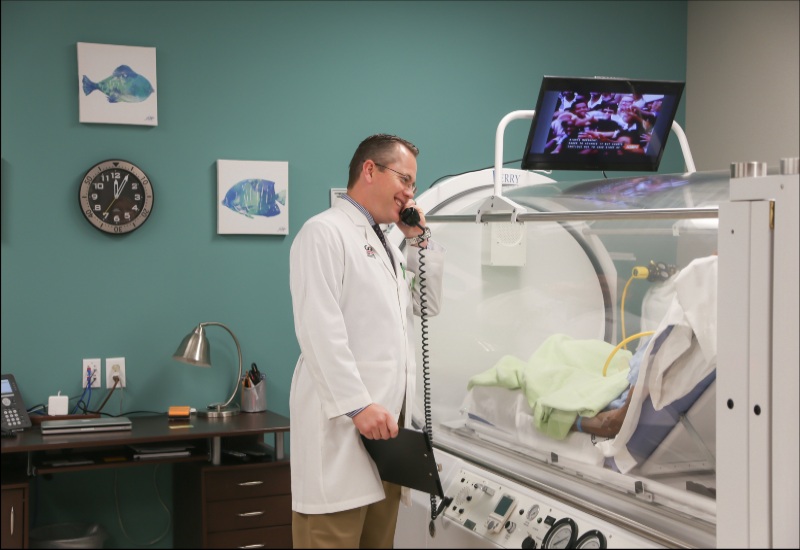
Scientific Principles of Hyperbaric Oxygen Therapy
The applications for hyperbaric oxygen therapy are varied, but the mechanism of action for hyperbaric oxygen therapy differs for different conditions. In other words, the way that HBOT provides effective treatment for decompression sickness and arterial gas embolisms is different than what makes it effective for chronic wounds. For the treatment of decompression sickness and other illnesses caused by gas bubbles, HBOT works according to Boyle’s Law, which indicates that the volume of a gas bubble is inversely related to the pressure being applied to it.
For the healing of chronic wounds, HBOT aligns with Henry’s Law. This law states: “At a constant temperature, the amount of a given gas that dissolves in a given type and volume of liquid is directly proportional to the partial pressure of that gas in equilibrium with that liquid.” What does this mean in terms of HBOT? When 100 percent oxygen is administered to a patient and the pressure is elevated, the amount of oxygen that can be dissolved in the patient’s blood serum increases. Since oxygen demand and utilization is increased during tissue repair and wound healing, increasing the amount of available oxygen promotes healing.
Benefits of Hyperbaric Oxygen Therapy Explained
HBOT is approved by the FDA to treat 13 different conditions, and more clinical trials are underway to determine its application for further ailments. The benefits are numerous:
- HBOT helps wounds to heal by carrying oxygen-rich plasma to oxygen-deprived tissue.
- The severe tissue damage that occurs when blood supply returns to tissues that have been deprived by oxygen, known as “reperfusion injury,” can be prevented using HBOT.
- HBOT disables the toxins of certain bacteria and increases oxygen concentration to help the body resist infection, as well as improving the strength of the body’s white blood cells.
- By encouraging new blood vessels to grow, and stimulating cells to produce substances that boost tissue growth, HBOT encourages new collagen and skin cells to form.
Trust the Experts in Hyperbaric Medicine
Innovators in hyperbaric medicine, Baromedical Associates provides the most advanced and effective therapy available, offering expert services in a luxurious, private setting. Our certified, experienced technicians and multi-disciplinary physicians work to provide each individual with a treatment program designed to offer the best possible outcome. We are internationally known for our work with children, and we treat all ages at our clinics in the Dallas Metro area. At all of our state-of-the-art clinics, patients receive Hyperbaric Oxygen Therapy in the world’s most advanced and spacious acrylic single person chambers. To find a location or for more information, contact us through our website.
